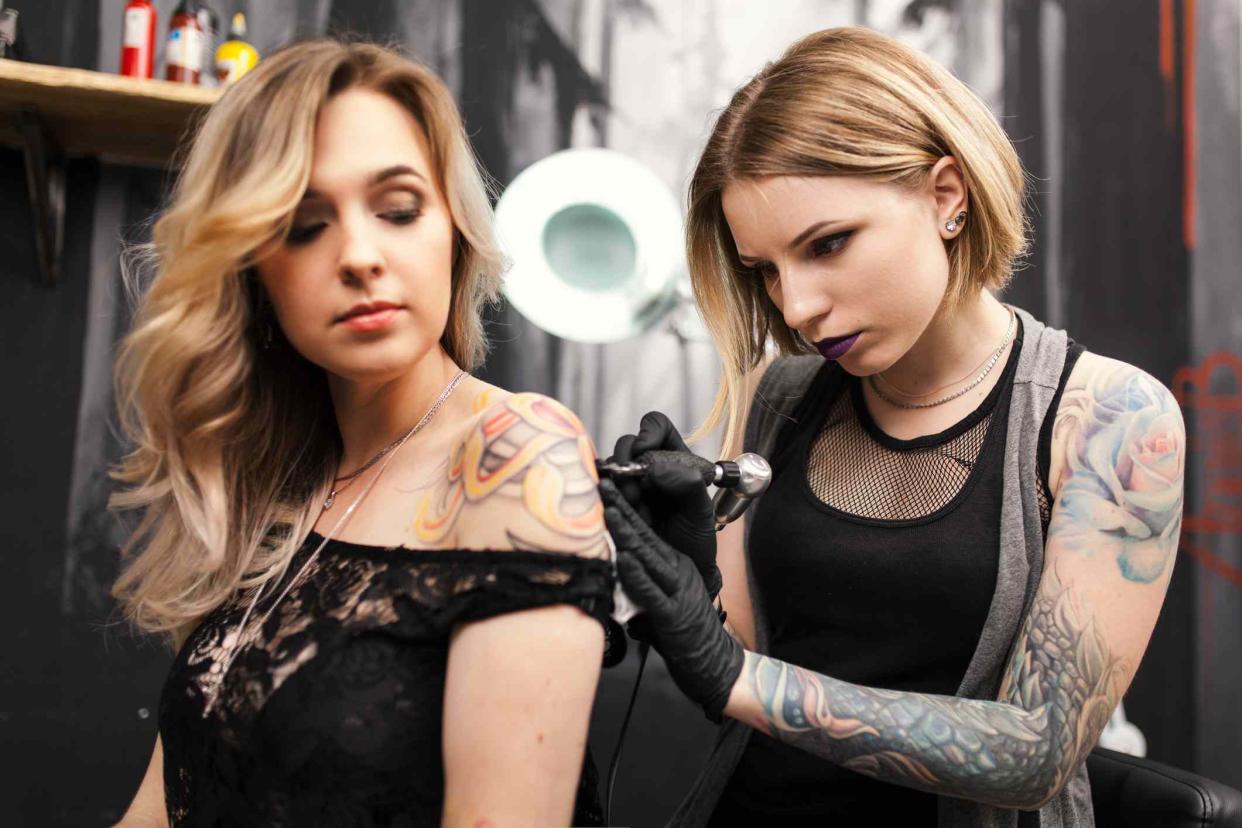Outlining or Shading a Tattoo: Which Hurts More?

Gdolgikh / Canva
Medically reviewed by Rachel Nazarian, MD, FAADFact checked by Anna Harris
Tattoos generally entail two phases: outlining and shading. Well, unless you're opting for simple script or symbols. Whether you're considering your first tattoo, or adding to an existing design, you're likely wondering what you should be preparing for, and how much pain you can (and will have to) tolerate with both outlining and shading. The answers might influence the type of design you settle on.
Some tattoo artists have what one would call a "light touch," which is an ideal trait in a tattoo artist, so long as the ink is placed deeply enough in the skin that it stays put. If your tattoo artist goes too deep into your skin, you may feel a more significant amount of pain. In the hands of an experienced, expert tattoo artist, you'll feel discomfort, but the pain should not be excruciating.
Pain perceptions, tolerances, and experiences vary widely, of course, but here's a general overview of outlining and shading, and the pain each typically causes.
Byrdie Tip
Drink plenty of water before and during the tattoo process.
Tattoo Outlining
Tattoo outlining is the first step of the tattoo process. This is where your artist draws your tattoo design onto the skin with the needle. If it's your first tattoo, you might be in for a bit of a shock. Some people describe tattoo pain as a sharp razor blade cutting the skin. Others say they can feel the needle going through the layers of the skin.
If you've decided you want a larger tattoo design, you're going to have to deal with a bigger outline. This is why small tattoos are a good first choice if you're not certain of how much pain you can tolerate.
If you have your heart set on a grand-scale tattoo design, you may want to split your tattoo session into several smaller ones instead. Obviously, there are exceptions to this, such as if your tattoo artist is only in town for a limited time, or you've waited years for your appointment. But if you opt to get all the outlining done at one time, and add the shading or color later, your body will have time to heal—and you can take a much-needed break from the shock of the needles.
Related: Getting a Tattoo: Everything You Need to Know (And Do), According to Experts
Tattoo Shading
Unlike outlining, shading isn't necessary for every tattoo. Color and shading simply provide more dimension than line work.
Contrary to what you might expect, many people report that the shading hurts significantly less than the outlining of the tattoo. If you've already made it through your line work, pat yourself on the back. You've likely conquered the most painful part already. You can do this!
That said, you should understand what is happening during the shading process. It's not the simple, single pass of an outline. Rather, your artist will be packing ink into your skin repeatedly, often for hours at a time, over the same area—which is why some people mistakenly expect it to be more uncomfortable than outlining. But remember: Outlining is very detailed, and your tattoo artist uses needles of a different size for the process. The level of pain you experience is a function of more than just repetition.
Anticipating and Managing Pain
Regardless, both parts of the tattoo process have their own positives and negatives. If you're getting your first tattoo, maybe stick to a manageable, medium-sized design. The pain isn't permanent, but the design is.
It's also a good idea to avoid the more painful tattoo locations, like the ribs, hands, feet, and knees—any location where the skin is thin, and bones are close to the surface.
Once you have your first tattoo, you'll have a real understanding of how your body reacts to the process. Don't be surprised if you immediately get excited about adding more body art. It's actually pretty common. Likewise, you might stop there if you've decided tattoos (and the pain involved) just aren't for you.
Up Next: Tattoo Aftercare: The Complete Guide, According to Dermatologists
Read the original article on Byrdie.